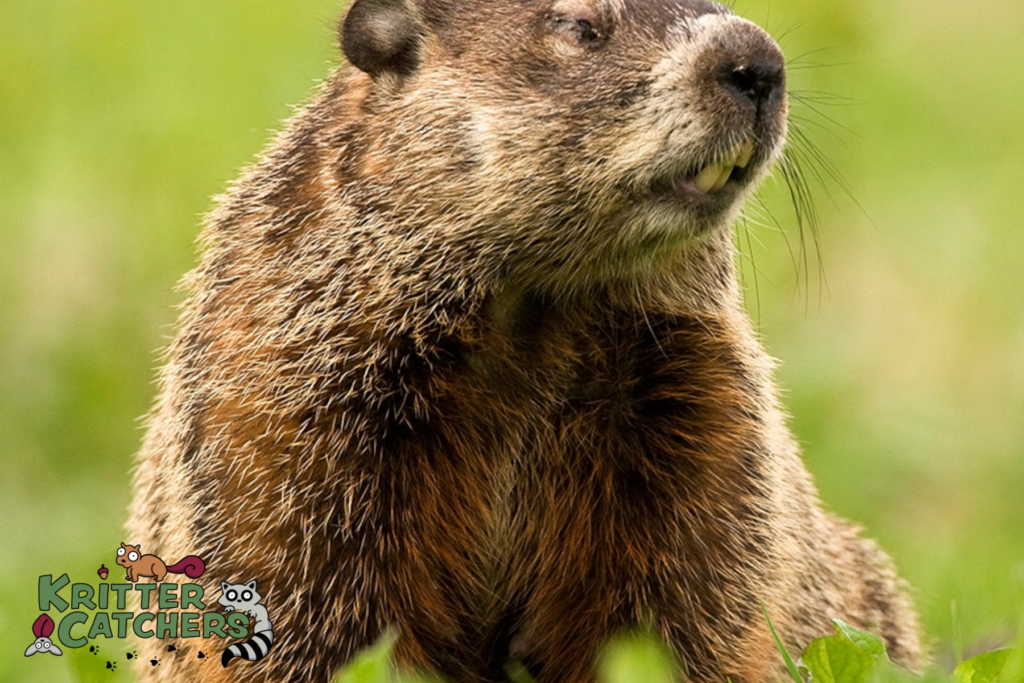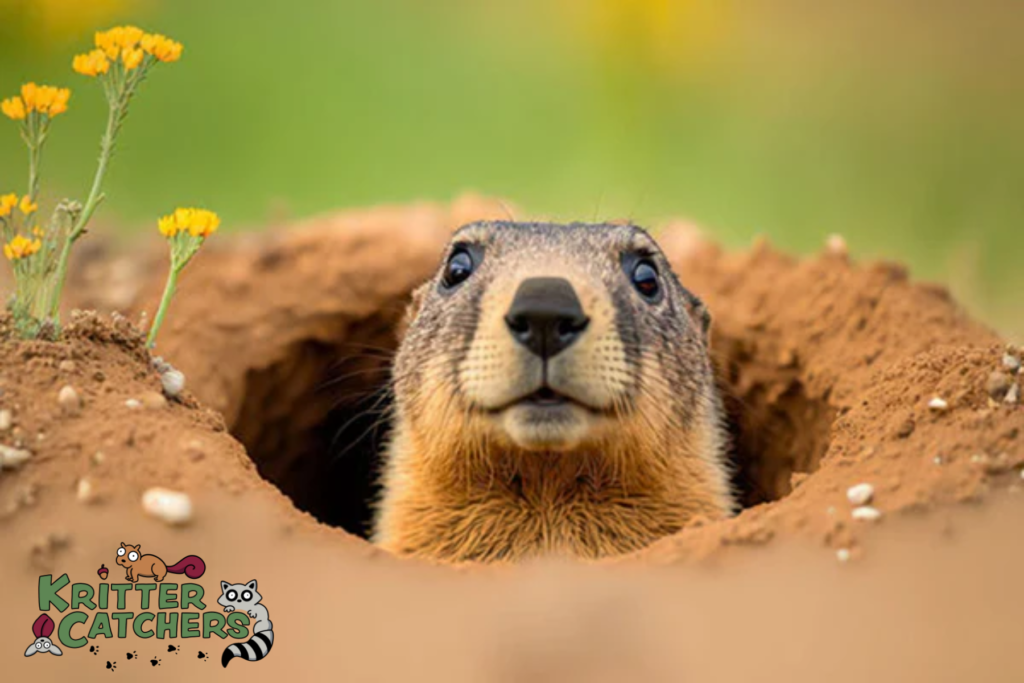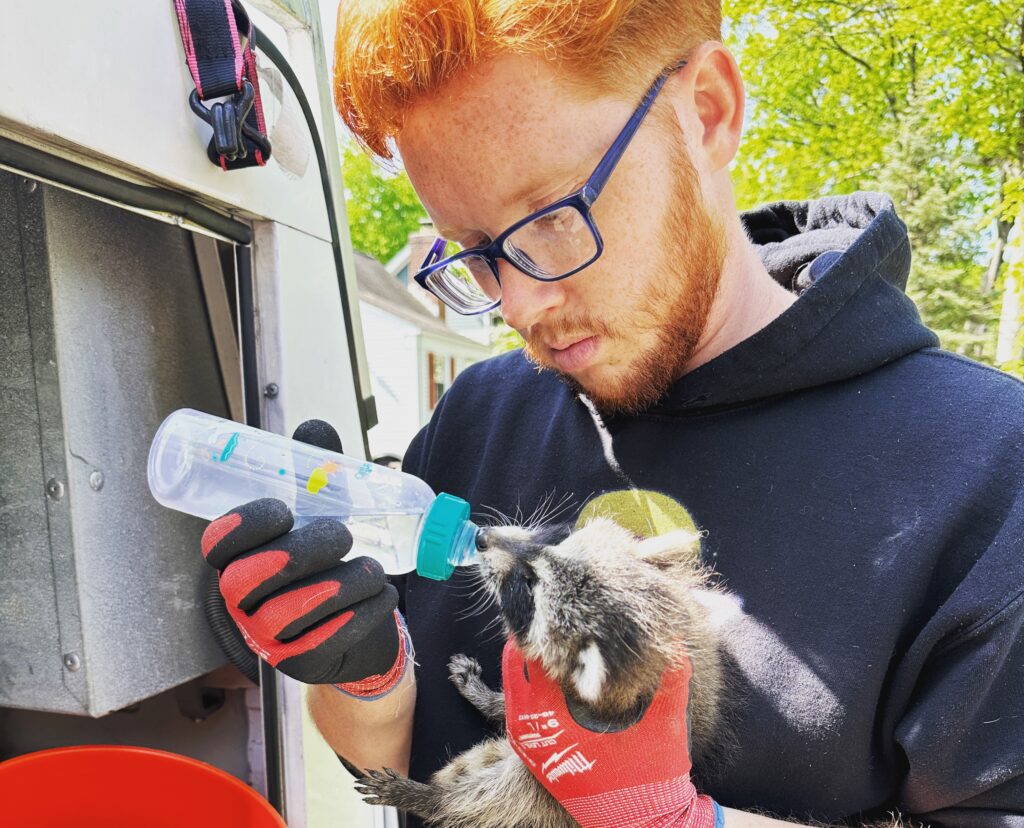Groundhogs, often referred to as woodchucks, are small but mighty creatures that can cause significant damage to your yard and garden. While they may seem harmless, their burrowing habits and relentless foraging can lead to more trouble than you might expect. If you notice groundhogs in your yard, you could be facing a growing problem that requires immediate attention. In this article, we’ll explore why groundhogs are a serious threat to your property and how to handle an infestation before it’s too late.
Understanding Groundhogs and Their Behavior
Groundhogs are burrowing animals that belong to the rodent family. They are typically about 16-26 inches long, with a stocky build and a bushy tail. These creatures are most active during the warmer months of the year, particularly in spring and summer, when they are busy foraging for food and preparing their burrows for hibernation in the winter.
Groundhogs are herbivores and primarily feed on grasses, fruits, vegetables, and even tree bark. In your yard, they may be attracted to garden plants, shrubs, and even your lawn. However, their most significant threat comes from their burrowing habits. Groundhogs create complex burrow systems with multiple entrances and tunnels, which can wreak havoc on your property.
Why Groundhogs Are a Problem
While groundhogs may seem like just another pest, they pose a serious risk to your home and landscape. Here are a few reasons why groundhogs can be a significant problem:
1. Damage to Lawns and Gardens
Groundhogs are notorious for their ability to destroy gardens and lawns. They dig tunnels and burrows that can disrupt the roots of plants and crops, making it difficult for them to grow properly. Groundhogs are particularly fond of vegetable gardens, where they’ll munch on your prized tomatoes, lettuce, and other plants. Their feeding habits can leave your garden looking like a battlefield, with missing plants and chewed-up stems.
2. Burrowing and Structural Damage
Groundhog burrows are not just a nuisance—they can also cause serious structural damage to your property. These burrows, often located near foundations, sidewalks, or driveways, can weaken the ground beneath and cause sinking or cracking in the structure. Over time, the burrows can erode the soil around your foundation, leading to costly repairs. Additionally, groundhogs can burrow under fences, posing a risk to your yard’s perimeter.
3. Health Risks
Groundhogs are known to carry diseases such as rabies, leptospirosis, and ticks, which can pose health risks to both humans and pets. While groundhogs are generally shy and non-aggressive, their presence can increase the likelihood of diseases being transmitted to other animals in your yard. The parasites and bacteria carried by groundhogs can spread to pets that may encounter them or their burrows.
4. Damage to Trees
Groundhogs often chew on the bark of trees, especially young or vulnerable ones. This can lead to long-term damage, potentially killing the tree or stunting its growth. If left unchecked, groundhogs can strip bark from the base of the tree, which can cause serious injury to the tree and eventually lead to its death.
5. Risk to Other Wildlife
Groundhogs are territorial creatures, and their burrows can displace other wildlife. Animals like rabbits, snakes, and smaller rodents may take over abandoned burrows, further complicating your wildlife issues. When groundhogs create burrow systems, they often force out other creatures that could have otherwise benefited your ecosystem, leading to a disruption in the local wildlife balance.
How to Spot the Signs of a Groundhog Infestation
If you suspect that groundhogs have invaded your yard, it’s essential to identify the signs early. Here are a few indicators to look out for:
1. Visible Burrows
Groundhogs are burrowers, and one of the most obvious signs of an infestation is the presence of burrows. Groundhog burrows are typically located near the edge of your lawn, garden, or even under decks and porches. The entrance is usually about 10 to 12 inches in diameter and can be surrounded by loose dirt or grass. If you notice multiple burrows or fresh dirt piles, it’s likely that groundhogs have taken up residence in your yard.
2. Damaged Plants and Crops
Groundhogs love to feast on vegetation, so damaged or missing plants are a clear sign of their presence. If you notice that your garden has been chewed on or certain crops are disappearing overnight, groundhogs could be the culprits. They often target tender plants, flowers, and vegetables, leaving behind chewed stems or partially eaten fruit.
3. Evidence of Groundhog Activity
Groundhogs are not nocturnal like some other wildlife, so you may catch them in the act during the day. If you see a groundhog foraging for food in your yard or emerging from a burrow, it’s a clear indication that you have an infestation. Groundhogs typically stay close to their burrows, so spotting one means you likely have a larger problem at hand.
4. Holes in the Ground
Groundhogs often dig holes near the edges of lawns, gardens, and even under fences. These holes are typically around 3-4 inches deep and can be found throughout your yard. If you notice small holes appearing in your lawn, especially in areas that seem too smooth or consistent, it’s time to take a closer look.
Why You Need Groundhog Removal
Groundhogs are more than just a nuisance—they can cause significant damage to your yard and home. If you spot any of the signs mentioned above, it’s important to take action before the damage gets worse. Groundhog removal is necessary to protect your property, prevent further damage, and ensure the health and safety of your family and pets.
Attempting to remove groundhogs yourself can be difficult and dangerous. Groundhogs are wild animals, and their burrowing habits make them tricky to trap and relocate. In addition, there are legal and ethical considerations to take into account when dealing with wildlife removal. Professional services ensure that groundhogs are removed safely and humanely.
How Professional Groundhog Removal Works
Professional groundhog removal services involve a combination of traps and deterrents to safely remove groundhogs from your property. Wildlife control Morris County NJ experts use specialized equipment to locate and capture the animals without causing harm to them or your property. After removal, experts will also help you seal off entry points and offer guidance on how to prevent future infestations.
Prevention Tips
To prevent groundhogs from returning to your yard, it’s essential to implement a few simple strategies:
1. Secure Your Garden
Protect your garden with fencing or netting to keep groundhogs out. Make sure the fence is buried a few inches into the ground to prevent them from digging underneath.
2. Remove Attractants
Groundhogs are drawn to food sources like fruits, vegetables, and pet food. Be sure to keep your yard clean and remove any food attractants that could encourage them to settle in.
3. Seal Burrows
If you discover an active groundhog burrow, it’s important to seal it up once the groundhogs are removed. This will prevent new animals from moving in.

About Kritter Catchers NJ
At Kritter Catchers NJ, we specialize in professional and humane groundhog removal services to protect your property from burrowing pests. Our team of experts provides comprehensive wildlife control Morris County and surrounding areas, offering safe and effective removal solutions. If you suspect a groundhog infestation in your yard, contact us today to learn more about our groundhog removal service and how we can help safeguard your home.


